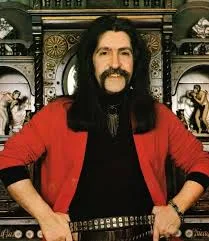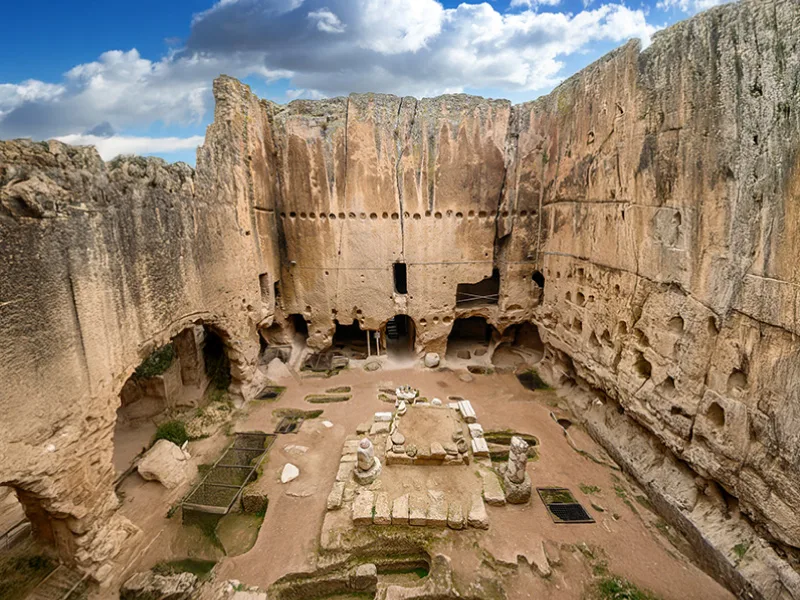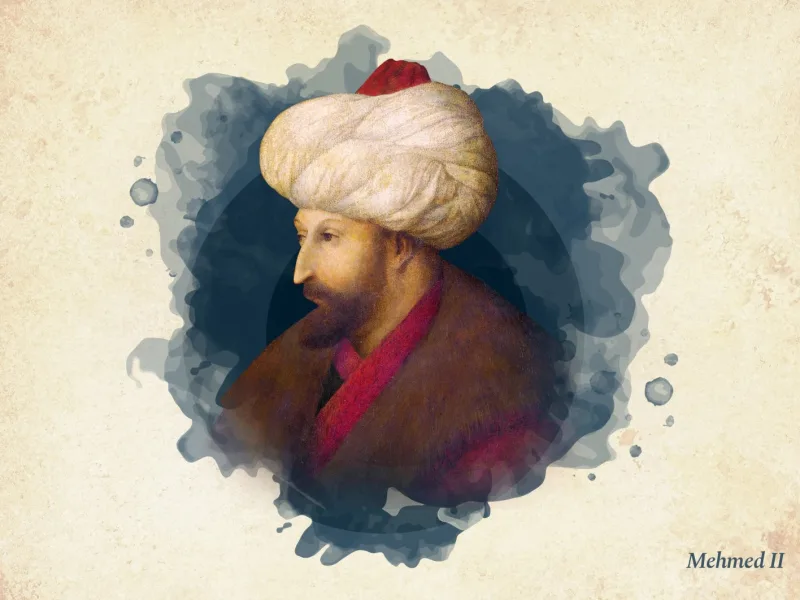As one of the important centers of Anatolia, Eskişehir has also a good position. It has a cold and snowy climate and does not get much rainfall during the summer. Being in a special location due to its closeness to Afyon, Kütahya, and Ankara, Eskişehir has forested areas. Porsuk and Keskin Streams are among the most important streams in our country and host the most beautiful picnic and trip areas.
Consecutively, Hittites, Phrygians, Lydians, and Persians took over the domination of this city. Later, it came under the domination of the Roman Empire, then the Byzantine Empire, and lastly the Ottoman Empire. Eskişehir is also the city where three of the Turkish Wars of Independence battles took place. Mustafa Kemal Atatürk proudly emphasized the importance of Eskişehir, its fertile soils, and the help it provided during war of independence.
Places to Visit
Although far from sea tourism options, Eskişehir does offer many historical beauties. Eskişehir is in fact seeing increased tourism numbers every single year, as people flock to visit the following places:
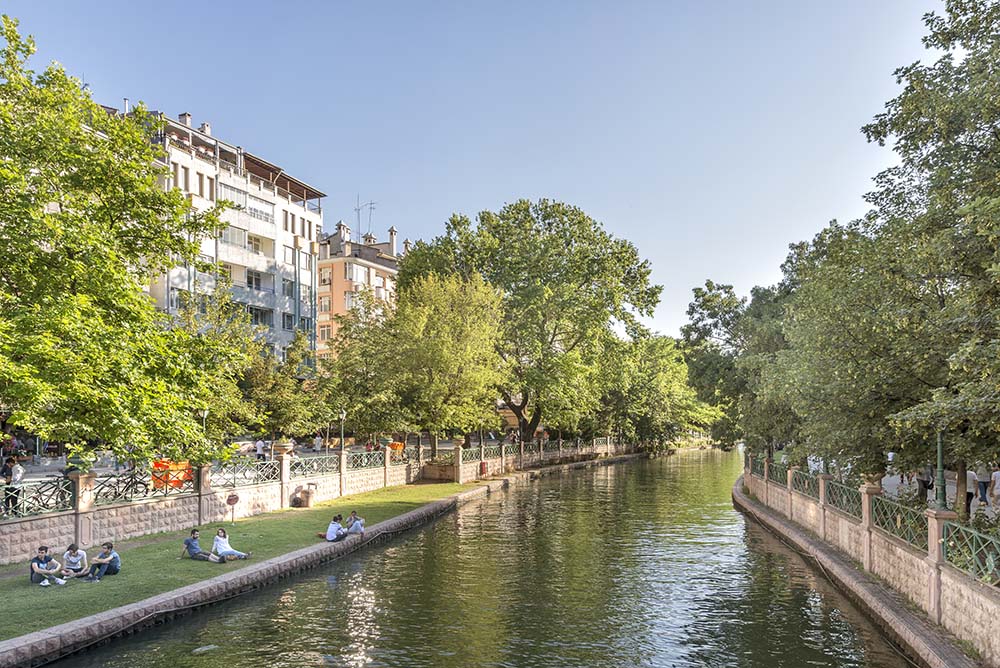
View of Porsuk river
- Phrygian Valley
- Odun Pazarı Houses
- Museums
- Sazova Park
Midas Monument (Yazılıkaya) stands in the Phrygian Valley area. Apart from that, one can also see geological formations that look just like the Fairy Chimneys of Cappadocia. The areas, which are also called Phrygian Valleys, are named Köhnüş Valley, Midas Valley, and Karababa Valley. Odun Pazarı Houses belong to the Ottoman period. These houses were designed as two or three-storeys with side, front, or back yards. As they carry historical value, these houses are being protected by restoration work. There are many picnic areas in Eskişehir as well. These places are:
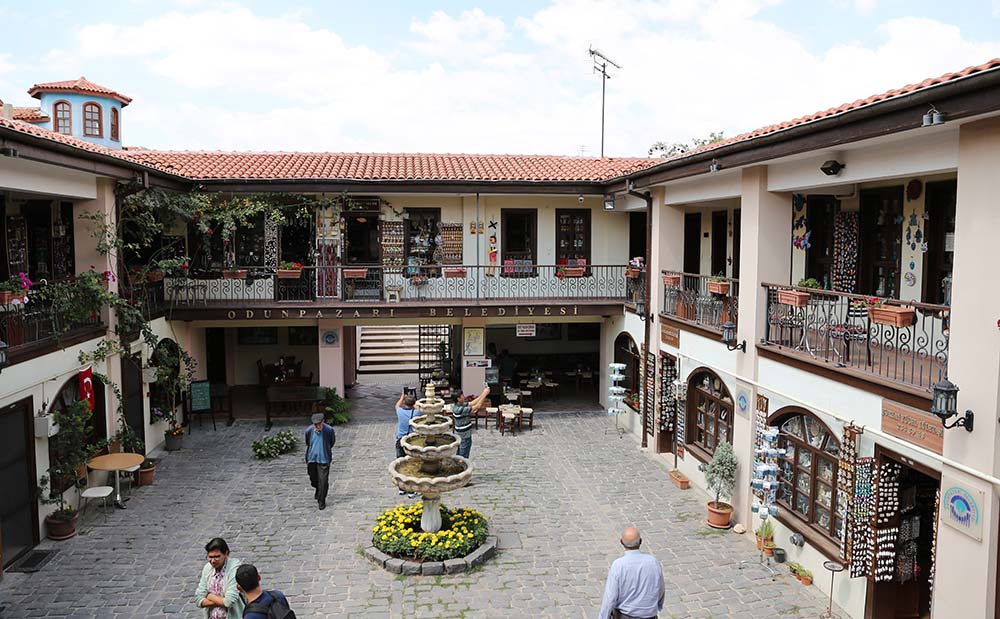
People shopping in Atlihan handicrafts bazaar. Atlihan was built in 1850 as caravanserai.
- Fidanlık Forest Recreation Area
- Bademlik
- Musaözü Dam
- Şelale Forest Recreation Area
- Karataş Forest Recreation Area
- Çatacık Forest Recreation Area
- Hasırca
- Kalabak Başı
- Şoförler Fountain
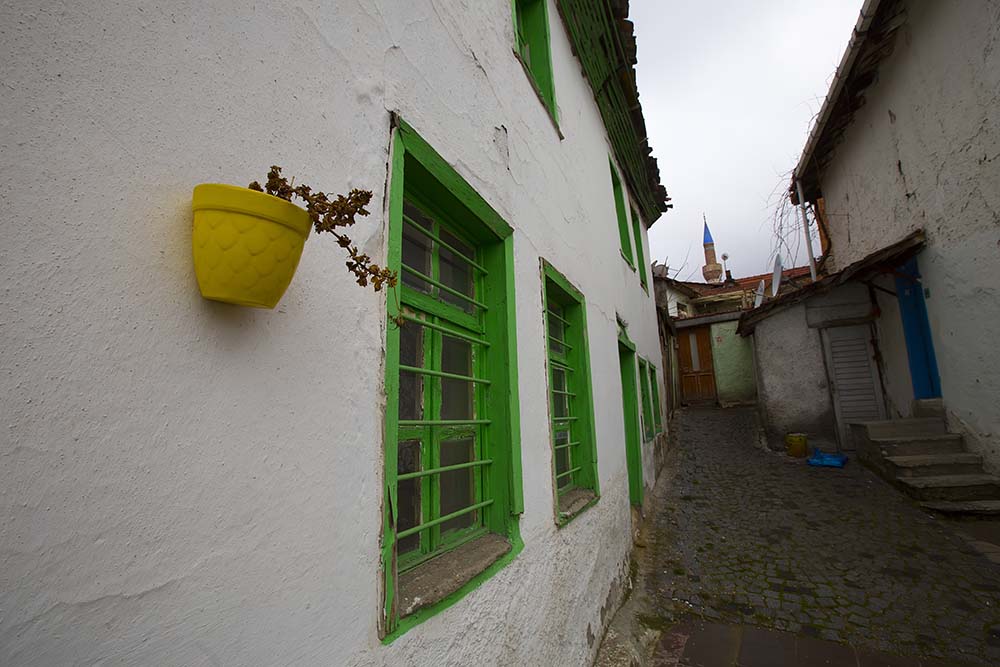
Historical, colorful homes and streets from Odunpazari.
Eskişehir Archaeology Museum is the most important one among the museum where antique objects are preserved. Apart from this, there are museums named Kent Park, Science Art and Culture Park, Contemporary Glass Art Museum, Pessinus Museum, Yunus Emre Museum, Seyit Gazi Museum, Orman Evi Museum, Karikatür Museum, and World Museums Museum.
Cuisine
All this cultural richness of Eskişehir has reflected on its cuisine as well. Having both local and traditional food cultures available, Eskişehir has also enriched its cuisine with the effects of migration from Caucasia, Balkan, and Crimea. Locals consume mallow, knotweed, lamb ear, sorrel, opium poppy, pastry, and wheat. Meat is most popular in the city center. Soup made of flour, ovmaç, and tarhana are also among the best known dishes of the province. You should definitely taste local fried dough stuffed with meat çiğbörek in Eskişehir.
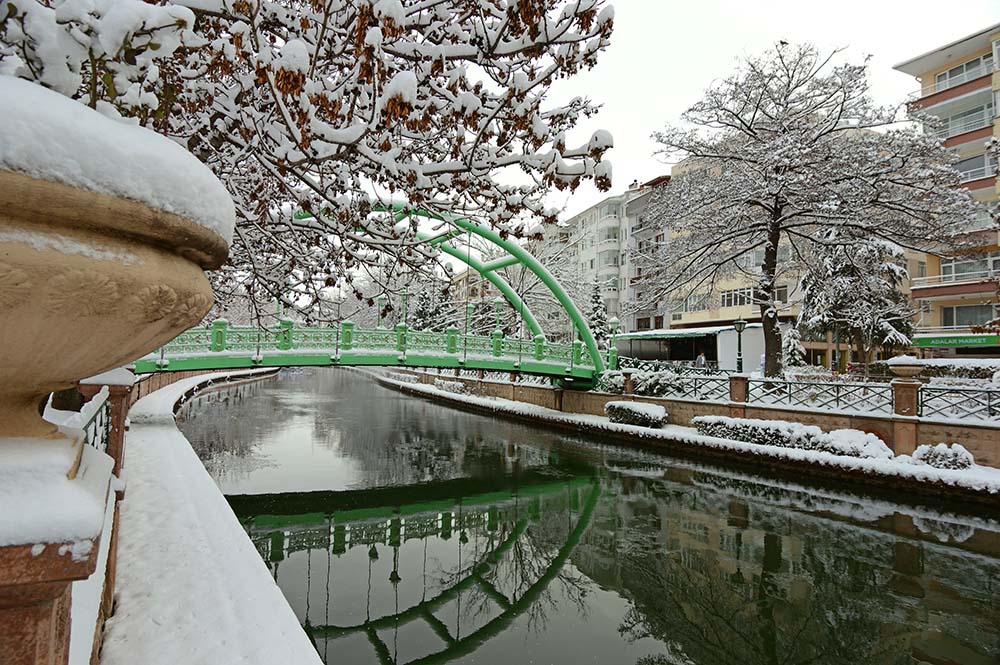
Porsuk river is beautiful in Winter season
There are some additional elements which make Eskişehir important, including:
- Production of the first Turkish automobile
- Production of the first street sweeper
- Production of the first dump truck
- Production of the first plane motor
- First high-speed train service
- First battery-powered forklift production
- First Turkish contemporary map drawing
How to Get There
As a junction point for railways, Eskişehir offers a good option for those who prefer cheap transportation. Thanks to the high speed train, one of the most important developments in railway, transportation has been literally accelerated. Bus or car travel is also available. Air transport is also possible via Eskişehir Anatolia Airport.

